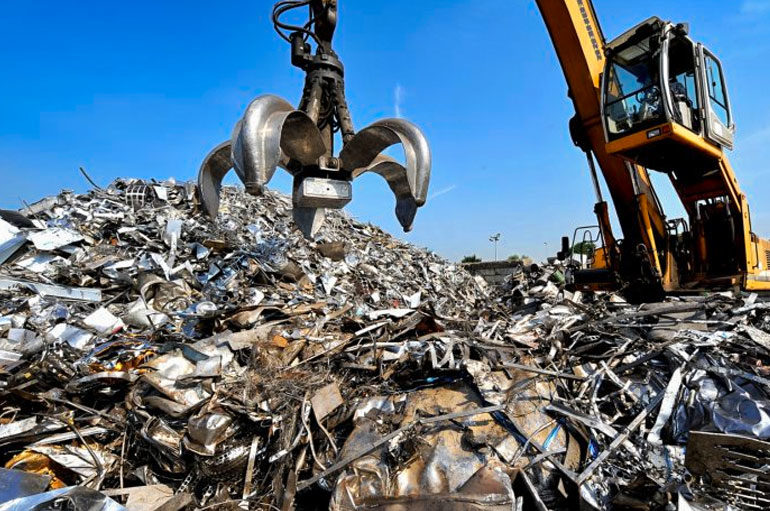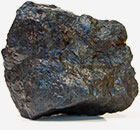Quality Magnetite Enables Dense Media Separation for Scrap Metal Recycling and Potash Production

Ferrous oxide’s magnetic properties make it the perfect material to separate impurities from valuable metals and minerals
Quality magnetite is a powerhouse product in a variety of industries. It functions as everything from a filter to a protective coating; its applications are nearly endless. Furthermore, researchers continue to discover new uses for magnetite in industries ranging from medical imaging to cosmetics.
In addition to finding brand new uses for magnetite, companies have also found ways to apply existing magnetite-related processes to different industrial applications. One of the most exciting examples of this industrial cross-pollination is the application of magnetite in dense media separation (DMS). Originally developed in the 1950s as a technique for refining coal, dense media separation now enjoys wide use in industries such as scrap-metal recycling and potash production.
When raw materials are extracted from mines, separating the desired product from unwanted waste materials can be a challenge. With magnetite, producers can use basic physics to separate the valuable from the worthless while reducing harmful and even toxic byproducts, through dense media separation. Before the development of complex DMS systems, separating valuable product from waste byproducts was challenging. Yet, DMS changed the refining process for any compound where the refined product varies in density from the unrefined product.
“Dense media separation is one of the most powerful applications discovered for magnetite” says George Hamilton, Operations Manager at Quality Magnetite. “Not only does the addition of magnetite allow for easier extraction of a purer end product, but the magnetite is also easy to reuse. Because of its magnetic properties, to remove the magnetite after the dense media separation is complete you can just apply a magnetic field.”
The best way to understand dense media separation is to imagine a prospector panning for gold in a river. The prospector swirls the pan filled with dirt and clay and water, watching as the heavier particles sink to the bottom and then filter out, leaving behind a fine dust of tiny gold flakes.
Now, imagine that you could change the specific density of the water so that the clay, dirt and sand floated on top while the heavier and more valuable gold particles sank to the bottom. This is what the addition of magnetite makes possible. All you have to do once you’re done is skim off the top, apply a magnetic field to the separation medium to remove the magnetite, and voila: gold.
Of course, the power of magnetite in dense media separation goes beyond coal and gold. Everyone from scrap-metal recyclers to potash producers is finding uses for this efficient, time-saving technique in their businesses.
Magnetite speeds scrap-metal washing and recycling
Scrap-metal recyclers face a tough challenge: how to remove the maximum amount of valuable shredded metals from the unwanted debris as quickly and efficiently as possible. Dense media separation is a miracle technique in helping to achieve this goal. DMS separates the more valuable shredded metals from the seat cushions, rubber and plastics used in automobiles.
And once extraction is complete, DMS continues to reveal its superiority as a process. Not only have scrap-metal recyclers saved time, but they can then easily remove the magnetite using magnets and store it for reuse in the next round of scrap-metal washing. This cuts down costs and reduces waste.
Ferrous oxide boosts potash production
Scrap metal recycling isn’t the only way magnetite-enabled dense media separation is helping boost industrial production. Producers of potash are also finding DMS to be a vital tool in isolating KCl from unwanted compounds. After extracting the potash from the earth, it needs to be purified. This is accomplished via a variety of techniques, one of the most important of which is DMS.
Through the addition of ground magnetite, producers can increase the density of the potash-containing brine, separating the potash from the sodium chloride that accompanies it.1 Once this is complete, magnets can remove the magnetite from the mixture, allowing it to be reused in future production. Just as in all industrial processes, the ability to reuse production materials translates into savings, savings that potash producers can pass on to their customers.
Find out more
When you work with Quality Magnetite, you’ll have access to our superior supply chain network and team of product experts, making sure you’ll have the right amount and type of product for your magnetite needs.
To learn more about the applications of magnetite in dense media separation and how you can apply it to your scrap recycling or potash production endeavors, get in touch with one of our expert sales staff today. The QMag team looks forward to hearing from you.
1 International Plant Nutrition Institute, “Potassium Fertilizer Production and Technology,” http://www.ipni.net/ipniweb/portal.nsf/0/68907f5d1e5922f8062577ce006ad872/$FILE/K%20Fert%20Prod%20&%20Tech%2011%2016%2010.pdf

